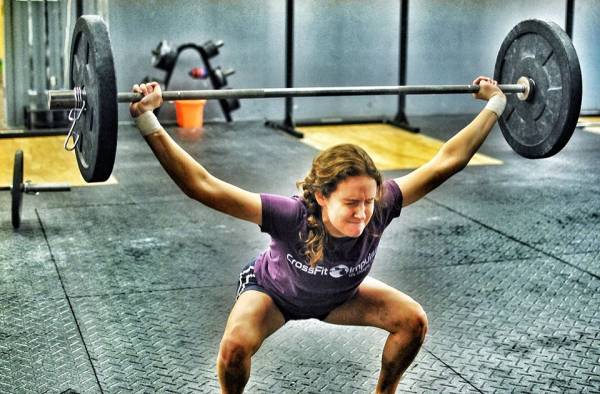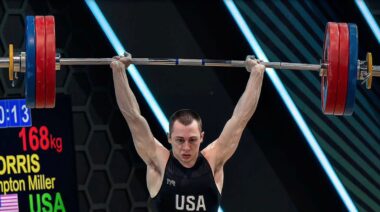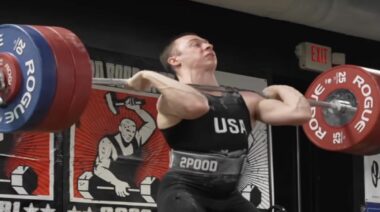When I was a kid, I never trained the Olympic lifts. It’s a shame because they would have helped me tremendously as a power-sport athlete. In all fairness, I wasn’t alone in not doing many explosive lifts. Back then, most non-collegiate sports programs didn’t follow any real strength and conditioning methodology.
But I did train regularly, and eventually I become a bench-pressing machine. My peers, bodybuilding magazines, and my football coaches largely drove this particular outcome.
RELATED: 12 Simple Strategies to Boost Your Bench Press (and Save Your Shoulders)
I’m not bagging on the bench. In fact, in the short term, it was a good thing for me as an athlete. It certainly increased my upper-body strength, which dovetailed nicely with the sports I played. But unfortunately, in the long term, the bench press played a significant role in exacerbating my jacked-up shoulders.
Structure Issues in the Shoulder
As a kid, I was fortunate to be relatively injury-free throughout grammar school, junior high, and high school. The only exception was my chronic and acute shoulder pain. In fairness, a large portion of this condition can be attributed to my individual anthropometrics and bone structure. I was a boney little bastard.
RELATED: 5 Simple Solutions to Shoulder Pain
Regardless, I think in today’s world a decent athletic trainer or coach would have quickly figured out I had some structural issues in the shoulder joint. They’d also likely have deduced that the bench press wasn’t the best movement for me. Looking back, I wish someone had told me enough was enough when it came to benching.
The Problem With Persistance
By 2007, my training had become a bit stagnant and I started mucking around with an underground Internet-methodology called CrossFit. After a few months of training I was digging it. As my interest grew, I began attempting to master some of the more complex aspects. Specifically, those related to gymnastics and Olympic weightlifting.
Of course, I didn’t know what the hell I was doing, and the available resources of the time were a shadowy reflection of what we have now. But, like most meatheads, I began pounding the proverbial square peg into the round hole and working my way through the pain.
“And again, keep in mind that nobody had ever told me I had shoulder mobility issues. Not one athletic trainer, medic, or doctor. Nobody.”
I almost immediately began having issues. Like a fool, I struggled mightily while fighting shoulder pain, all in an attempt to achieve a decent overhead squat and snatch. It was infuriating. I’d watch videos of women half my size lifting more weight than me. It was a tough pill to swallow.
The reality was my shoulders hurt – badly. I found it difficult, if not impossible, to achieve a decent rack position in the clean and my overhead squat was a hellish nightmare. And again, keep in mind that nobody had ever told me I had shoulder mobility issues. Not one athletic trainer, medic, or doctor. Nobody.

So I continued to devour all the resources available on weightlifting, and I stretched and grimaced my way through many an overhead-squatting session. After several months of pain and misery, my shoulder mobility didn’t improve and my snatch made me look like an arthritic giraffe on rollerskates.
Seek Out an Expert You Respect
After a year of misery I decided to seek out an expert. A buddy of mine invited me to attend a CrossFit Olympic lifting certification he was hosting at his gym. As fate would have it, Coach Mike Burgener was teaching this particular certification.
Nowadays, a lot of people take great pride in being a Burgener demonstrator during a certification. But I can’t honestly say “pride” was what I was feeling when Coach Burgener paraded me onto center stage in front of my friends and peers.
To be fair, there was no malicious intent as Coach Burgener cued me through several different movements. It quickly became apparent that I was the physically defective opposite of the previously viewed perfect demo-girl.
“In Burgener’s expert opinion, the only viable solution for me was to do away with overhead squats and simply embrace the split snatch, like Everett.”
As “shocking” as it may be, it turned out that my biggest limitation was shoulder mobility. Over the course of the day, Coach Burgener worked with me one-on-one. Then, he tactfully informed the class that my shoulder immobility was probably beyond treatment.
He then shared a story of one of his star pupils, Josh Everett . It turns out Everett had exhibited the same type of dysfunction and Burgener and his team had spent the better part of two years trying to amend his condition to no avail. In Burgener’s expert opinion, the only viable solution for me was to do away with overhead squats and simply embrace the split snatch, like Everett.
Give Yourself Permission to Stop the Pain
You might think I would be upset or feel dejected with this outcome. But that wasn’t the case at all. I was ecstatic with the news. I no longer had to beat the crap out of myself to achieve a perfect overhead squat. I was downright thrilled.
RELATED: The Overhead Squat Is a Punk: Advice on How to Make It Better
In the end, Coach Burgener simply gave me permission to stop trying to do something I couldn’t do. As silly as that sounds, it was all it took for me to get past my sticking point.
Sadly, I still see this type of behavior in people almost eight years later. This aggravates me to no end. Self-abuse is not a healthy or normal undertaking. I often implore these types of folks to learn from my mistakes and not be goaded by the magical powers of the interwebz.
And the funny thing is that after my time with Coach Burgener my shoulders improved. The dynamic nature of the split snatch actually helped to create length through my pecs, leading to a better range of motion. It would appear in hindsight that the static nature of the overhead squat through the shoulder joint was causing most of my problems.

Be Honest With Yourself
The moral of my story is: don’t fall prey to arbitrary movement standards that may not be appropriate for you. We have to accept certain facts about our capacity to move. Whether that relates to a prior injury, dysfunction, or a lack of athleticism, it’s important to be honest with ourselves.
“There’s no need to get caught up in dogmatic principles when your body is giving you negative feedback signals.”
People who look at their training goals with an open mind and have a good coach can always find a work-around. There’s no need to get caught up in dogmatic principles when your body is giving you negative feedback signals. I can certainly understand and can attest to the psychological anguish you experience when you’re driven to achieve a goal and your body simply won’t comply. It sucks. I get it. But, is it really worth getting injured over?
In the end, it simply took someone I respected giving me an alternate route to the same destination to finally set my mind at ease. Strangely enough, this mental breakthrough led to a physical one as well. That’s why it’s important to surround yourself with supportive people who have your best interests in mind.
Training outcomes are largely dependent on your ability to solve problems. You can’t solve a problem by repeating the same actions over and over and expecting a different result.
Photos 1 & 2 courtesy of Shutterstock.
Photo 3 courtesy of CrossFit Impulse.






